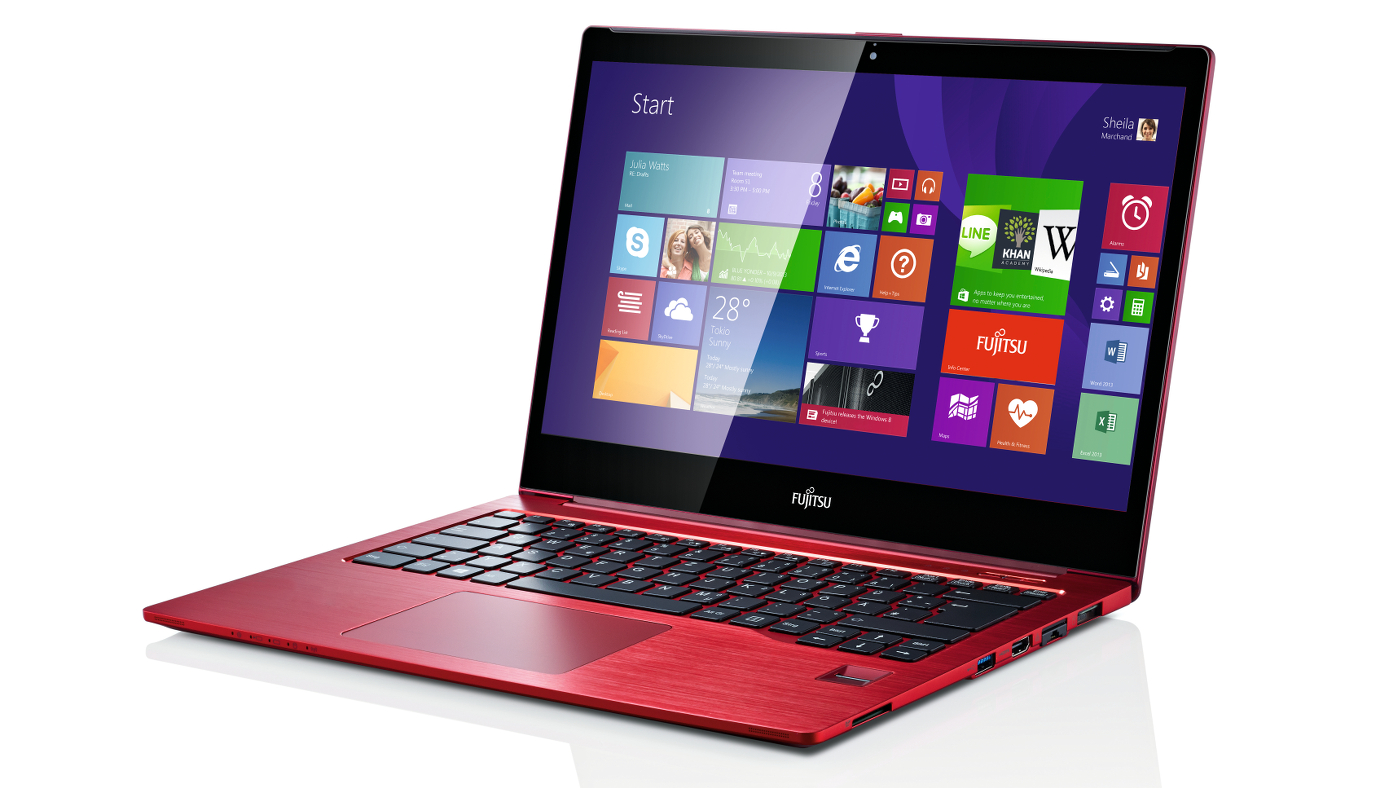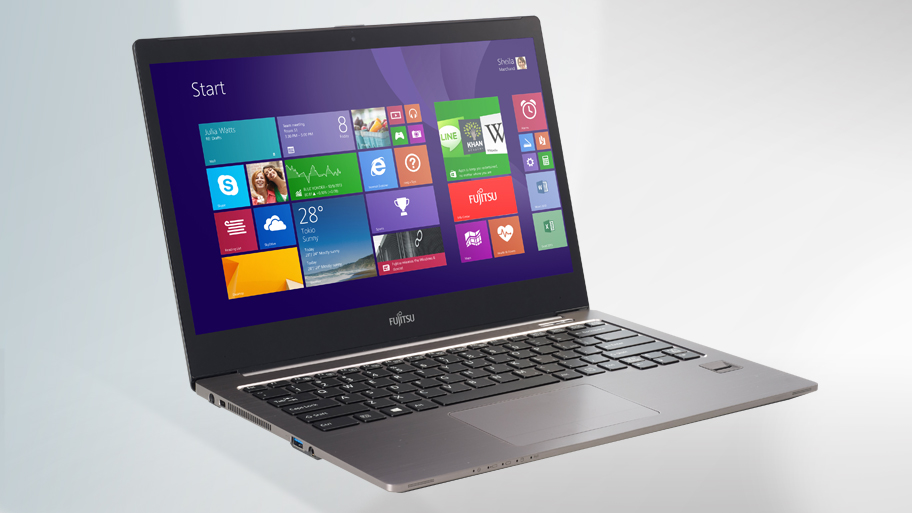Why you can trust TechRadar
The Fujitsu U904 is something of a rare breed in the business world due to its WQHD+ display, which sports an eye-catching 3200 x 1800 pixel-resolution. You're unlikely to find such a panel on any other business laptop, with the resolution reserved for Ultrabooks in the consumer space. Until now.
Lenovo's business-focused ThinkPad X1 Carbon comes close, packing a 2560x1440 pixel-resolution, but even that falls short of the Lifebook U904's display's extreme pixel density.
Consumer models that feature a display with a 3200x1800 resolution include the Samsung Ativ Book 9 Plus, Dell's XPS 15 (late 2013) and Lenovo's hinge-toting Yoga 2 Pro.
The Lifebook U904's 262ppi display uses Sharp's IGZO technology that can be found in models such as Apple's iPad Air, which allows touch panels to sport high pixel densities. The touchscreen features edge-to-edge glass and does a good job of staving off fingerprints which have a tendency to build up on touch-enabled devices.

Touch of glass
The Lifebook U904's 10-point touch functionality works flawlessly, whether used in desktop mode or with Windows Store apps. It allows you to pick out toolbar elements and UI icons with surprising accuracy and using all 10 fingers, which can help speed up your workflow whether used on its own or in conjunction with a mouse or the clickpad.
That said, the high-DPI resolution can cause problems. While 3200 x 1800 is novel in the consumer world, it requires some adjustments to font sizes of Windows desktop programs, which don't always scale to a readable level.
You'll have a massive desktop area to work in, but it can come at the expense of fonts, menu bars and UI elements being extremely difficult to read, making programs that look fine at lower resolutions difficult to interact with.
Evernote, for instance, is yet to provide an update to fix scaling at high-DPI resolutions, and suffers from infuriatingly small font sizes in Notes and Notebook sidebars. Of course, lowering the resolution to 1920 x 1080 instantly fixes the problem, but it renders the whole point of having a high-resolution display rather pointless.
Pixel perfect
On the other hand, if you're comfortable with adjusting Windows 8.1's scaling and toying with UI elements and sizes, the resolution does open possibilities to those that can take advantage of the massive screen real-estate and high pixel density.
Image and video editors, for example, would be able to edit content without having to constantly zoom in or use multiple monitors, and productivity types can use Windows 8.1's snap function to easily attach windows to different parts of the screen.
Furthermore, native Windows Store apps are written to take advantage of high-DPI resolutions, so you won't come across the same scaling issues, and they look a visual treat as a result.

